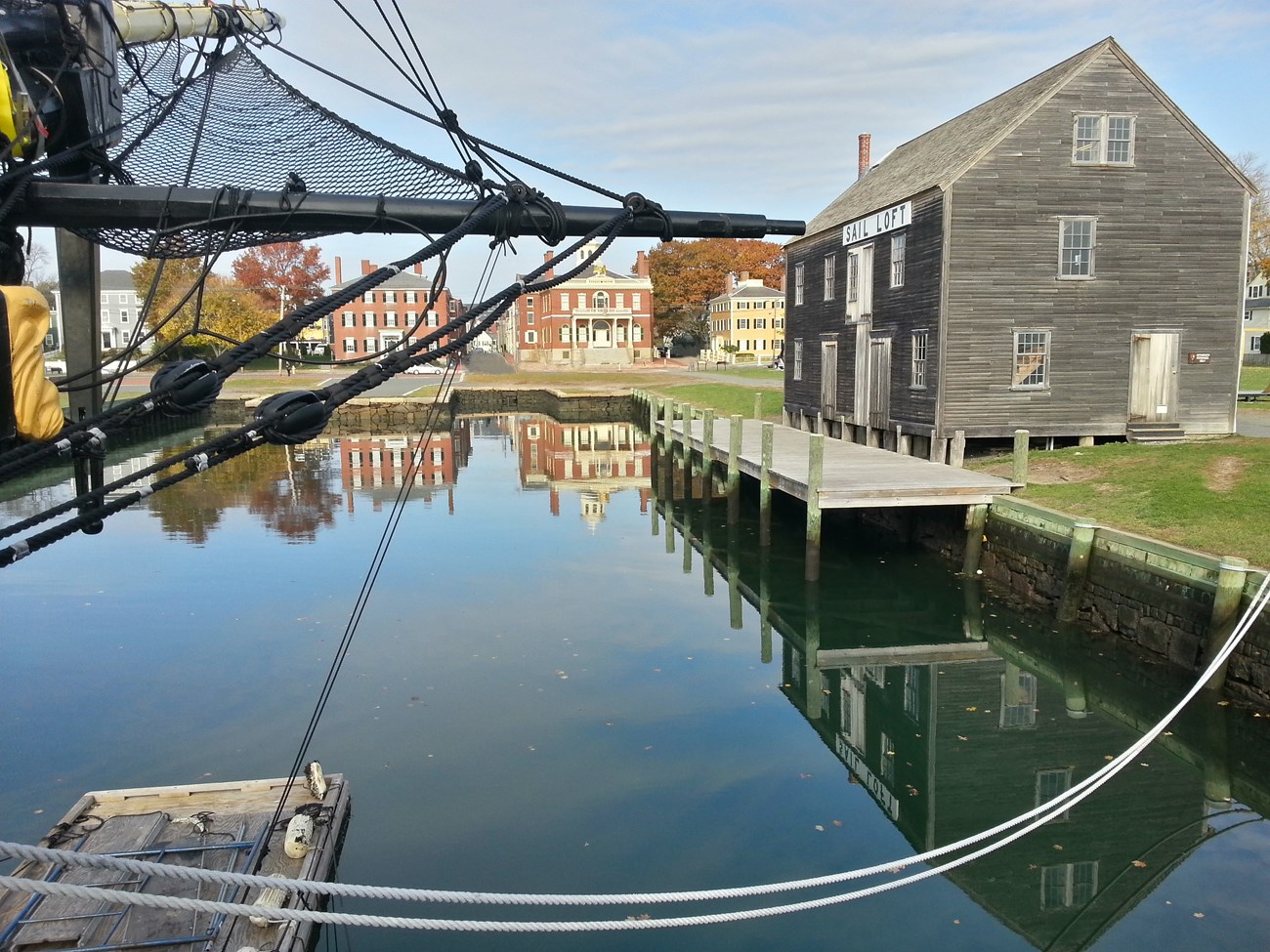Last updated: May 28, 2021
Article
History of Salem Maritime
In the National Historic Sites Act of 1935, Congress charged the National Park Service with identifying and preserving places of importance to our nation's history. The Act set out three major ways that the National Park Service might achieve this goal:
- First, through collecting photographs, architectural or engineering drawings, and research about private and public places of historical importance. Today, the Historic American Buildings Survey, the Historic American Engineering Survey and the Historic American Landscapes Survey have recorded thousands of buildings, machines, and landscapes, some of which no longer exist.
- Second, through the designation of National Historic Landmarks: places that have national historical significance, and have most of their historic fabric intact. These places can be owned privately or publicly.
- Finally, by identifying places of national importance that could be administered by the National Park Service - these are the National Historic Sites.

NPS Photo / Jeff Folger
On March 17, 1938 Salem Maritime National Historic Site was the first national historic site established by the National Park Service. Its purpose is to promote the maritime history of New England and the United States, and preserve part of the historic waterfront in Salem, Massachusetts. Together, this collection of wharves and buildings tell the story of the development of colonial port towns, the importance of international trade to the early economy of the United States, and the connection between maritime trade and growing industrialization.
Initially, the site consisted of the three wharves on the southern side of Derby street and four buildings on the northern side of the street. Derby Wharf (built 1762, extended to its current half-mile length in 1806), Hatch's Wharf (built 1819), and Central Wharf (built 1791) are the only wharves of the over fifty that lined the waterfront in Salem during the height of the town's international trade in the early 19th century that still retain their 19th century appearance.
When the National Park Service first looked at creating the site in 1935, there were about a dozen buildings on the property. Only five were judged to be important enough to keep; the rest were late 19th or early 20th century buildings that were knocked down to open up the space. The five buildings were: the U.S. Custom House (built 1819), a fine example of Federal-style government architecture; the Hawkes House, (begun c. 1780, finished 1800) another fine example of Federal style domestic architecture; the Derby House (built 1762), a small gem of Georgian architecture, and two warehouses: Forrester's Warehouse, which stood on Central Wharf, and unfortunately later had to be taken down, and a warehouse built by Henry Prince c. 1800 and today known as the West India Goods store.
Over the years, several other resources were added to the original historic buildings that enhanced the purpose of Salem Maritime:
- In 1963, the Narbonne House was added to Salem Maritime. The house, built in 1675 for butcher Thomas Ives, is a rare example of a middle-class 17th century house, and an archaeological dig in the backyard in the 1970s yielded nearly 150,000 artifacts that give a unique perspective on household consumption from the 17th to the 19th centuries.
- In 1976, an early 19th century warehouse slated for demolition was moved from Front Street in Salem to Central Wharf. This building now serves as Waite & Peirce, a park store for Salem Maritime.
- In 1988, St. Joseph Hall was added to the site. Built in 1909 as a meeting place and apartments by one of the Polish community clubs, this building was an important gathering place for the local Poles who lived in the area around Derby Street and worked in local industries in 20th century Salem, and enabled the site to engage with the local Polish community.
- In 2007, Salem Maritime began reassembling an 18th century warehouse on Derby Wharf. Built in 1770 on the Marblehead waterfront, Pedrick storehouse is a rare survivor of what was once a common building on American waterfronts: the warehouse. Today, Pedrick Storehouse provides workspace for the support of the reproduction tall ship Friendship, which has been moored at Derby Wharf since 1999.
